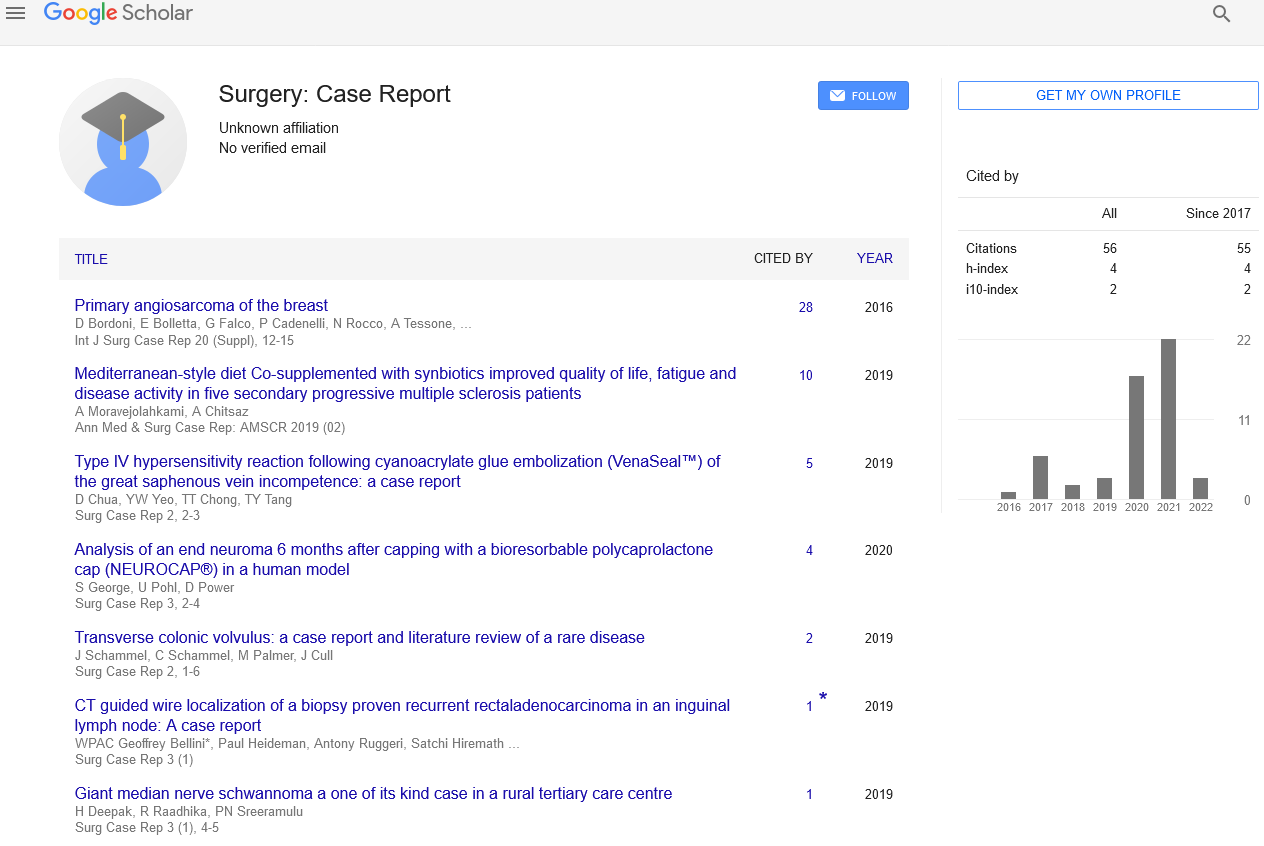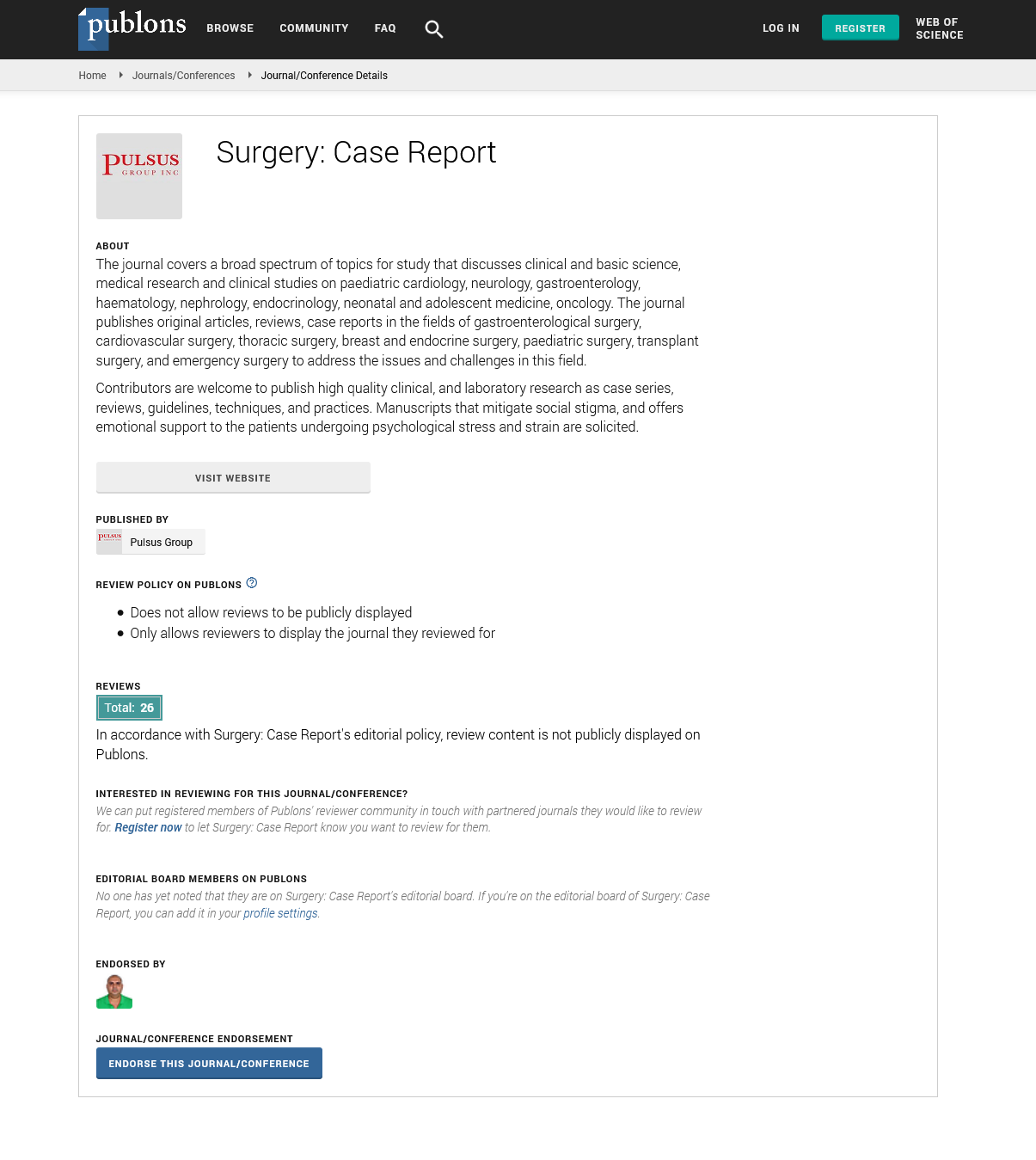presurgical opioid prescriptions leading to chronic opioid abuse
Received: 07-Sep-2021 Accepted Date: Sep 21, 2021; Published: 28-Sep-2021
Citation: Ajit SL. Pre-surgical opioid prescriptions leading to chronic opioid abuse. Surg Case Rep. 2021; 6(1):1-1.
This open-access article is distributed under the terms of the Creative Commons Attribution Non-Commercial License (CC BY-NC) (http://creativecommons.org/licenses/by-nc/4.0/), which permits reuse, distribution and reproduction of the article, provided that the original work is properly cited and the reuse is restricted to noncommercial purposes. For commercial reuse, contact reprints@pulsus.com
Commentary
The opioid crisis is well-known, with opioids accounting for more than 70 percent of the roughly over 70 thousand drug overdose fatalities by last decade. Considering that 5.9 percent 6.5 percent of patients who underwent some surgical procedure became the new chronic opioid abusers, the function of perioperative opioid prescription has fallen underneath examination. The link among opioids with gynaecological operations, especially simple gynaecological procedure, has been studied further. Approximately 130,000 opioid-naive patients who had gynaecological operations were examined utilizing data accessible from early 2010s to late 2010s. Basic gynaecological operations such as embryo evacuation, uterus ablation, or hysteroscopy, were performed on almost 75 percent of such individuals. Over different research projects, operational opioid use decreased from 21.8 percent in the early 2010s to 18.5 percent in the late 2010s, which was characterized as taking lower than or equal to 1 opioid prescription 1 month before and 1/2 month following operation. Post-operatively, 3.65 percent of patients had sustained opioid usage, characterized as using 1 or fewer opioid prescriptions within 91 and 180 days after surgical procedure. Perioperative opioid usage was found in 21 percent of subjects in this population, as predicted, and was an independent predictor for continued opioid use following operation. Getting an opioid prescription before to operation, being healthy, experiencing any psychiatric disorder, substance use disorder, or infertility, or experiencing pregnancy expulsion or hysteroscopy were all risk factors for persisting opioid use across individuals with perioperative opioid consumption. The existence of an opioid problem is very well recognized. Identifying an issue, on the other hand, does not imply that it will be solved. Whereas the fact that the overall pattern in prescription opioids is reducing is encouraging, the clinical significance is little. To demonstrate, the scientists discovered that decrease in opioid prescribing translates to 1 fewer pill administered each patient: in early 2010s, about 23 pills of oxycodone was administered, versus 22 pills in late 2010s. It’s difficult to claim that this is a significant development. Specialists should be capable of turning the findings of different researches into applications. Significantly, different studies highlight a number of lifestyle modifications for long-term opiate usage after surgery, and we may learn from their results. Because hysteroscopy and pregnancy eviction have been established as risk variables for chronic opioid use across ladies with perioperative usage, we could save these clients from the needless hazards of opioid intake by merely not prescribing opioids after such simple procedures. Furthermore, whenever opioids are appropriate, doctors must try to provide as little tablets as feasible, because individuals who completed a medication in the greatest percentile of overall OMEs had the greatest chance of establishing new chronic opioid addiction. Clients and physicians may be confident that when administered lower opioids post-surgery, they stay happy and weren’t more prone to seek refills; therefore, a lower, more personalized dosage quantity must be carefully evaluated. Although there are proof grounded guidelines for prescription opioids after a c delivery or uterus removal, there have been no clear criteria regarding minimal gynaecological operations. In addition for proof grounded recommendations to be released, further studies must validate the presumed modest pain control requirements post routine gynaecological operations. Incorporating collaborative judgment with patients on their surgical pain control strategy is also essential for reducing perioperative opioid usage. Educating patients on discomfort expectancies following gynaecological operations, the significance of pain in the back regimes, and the hazards of opioid usage must be reinforced, as well as information about how to control pain using no opioids is important.






